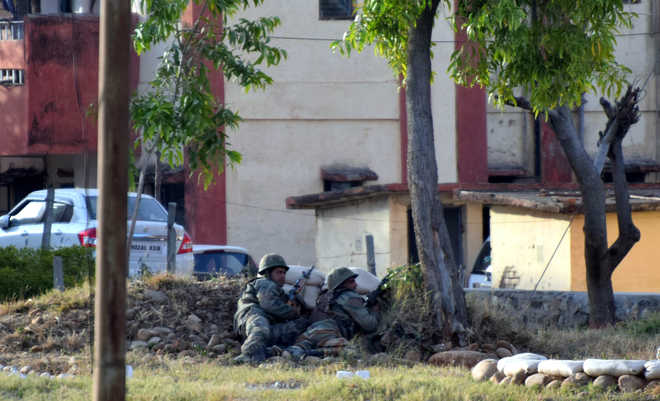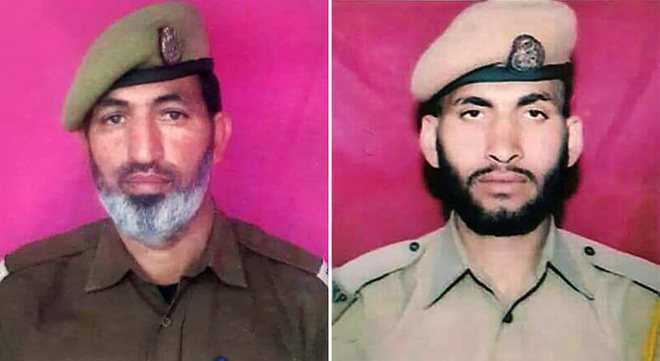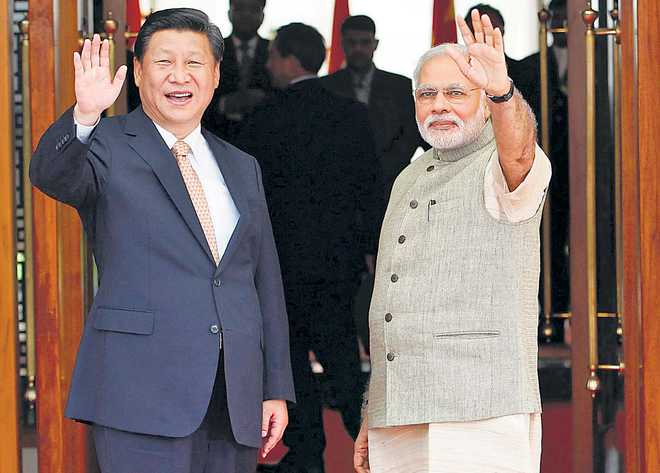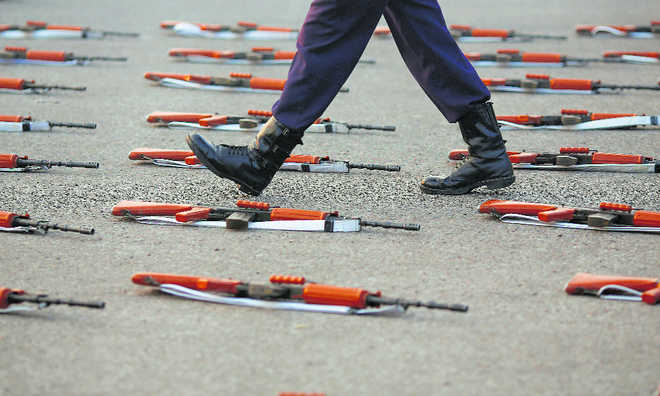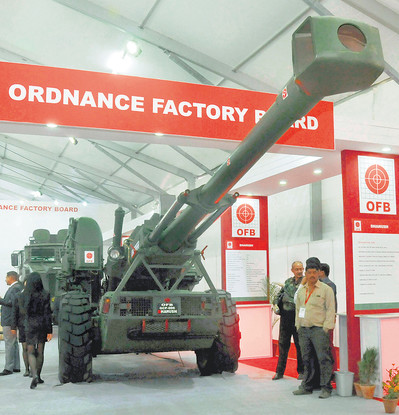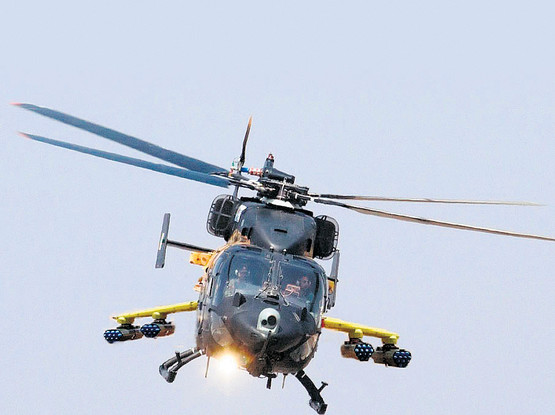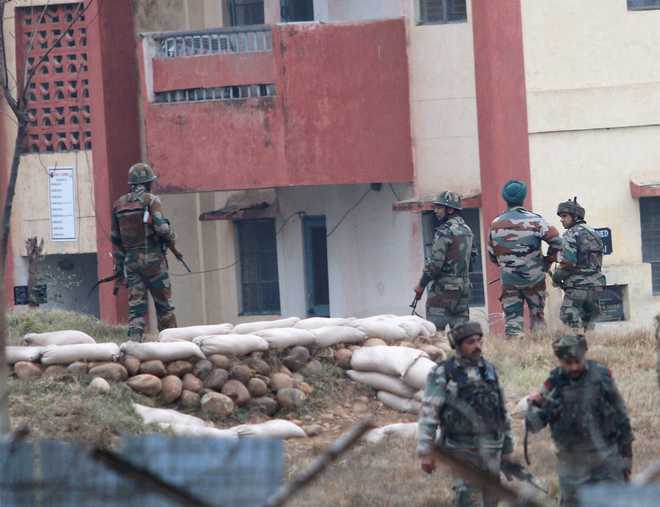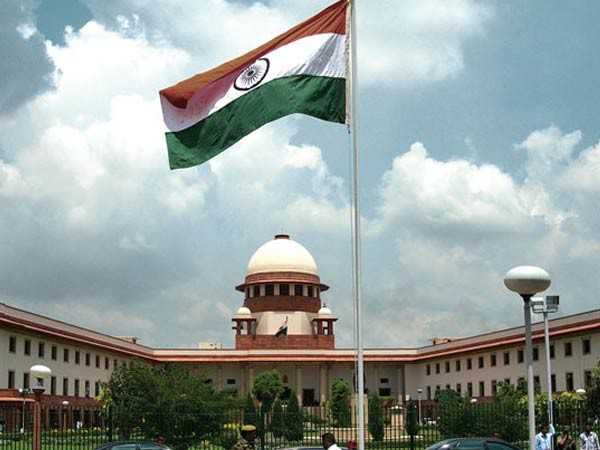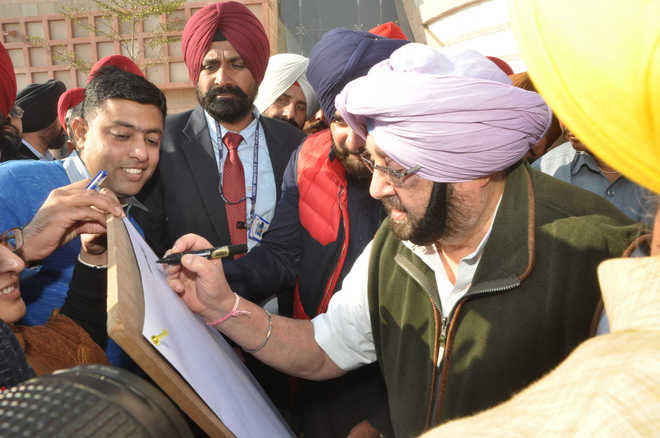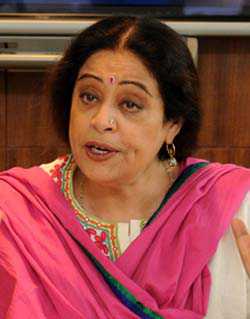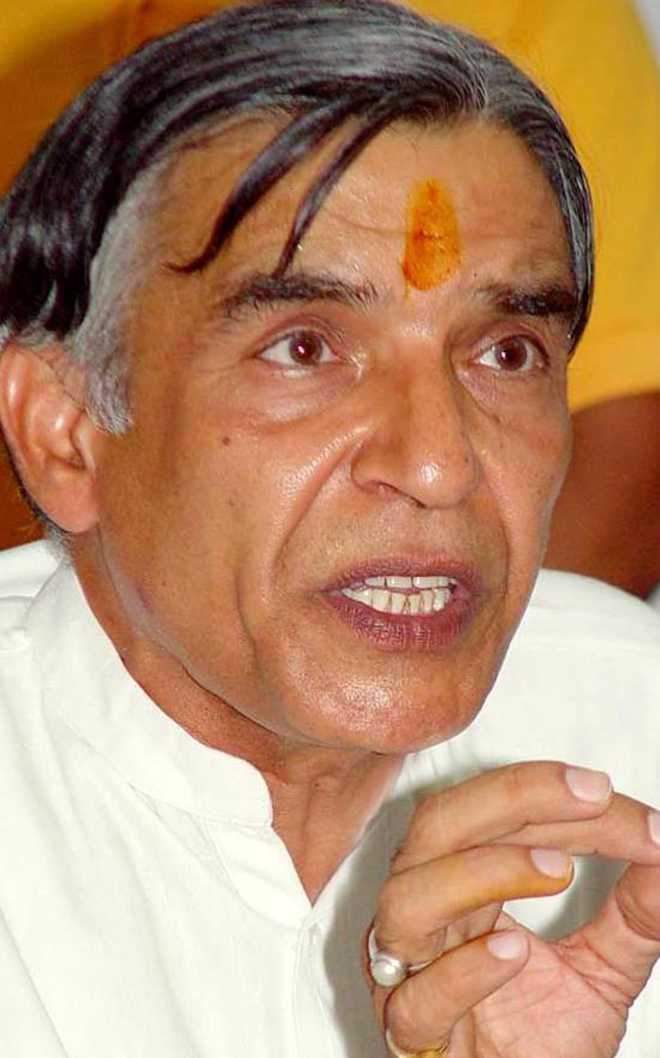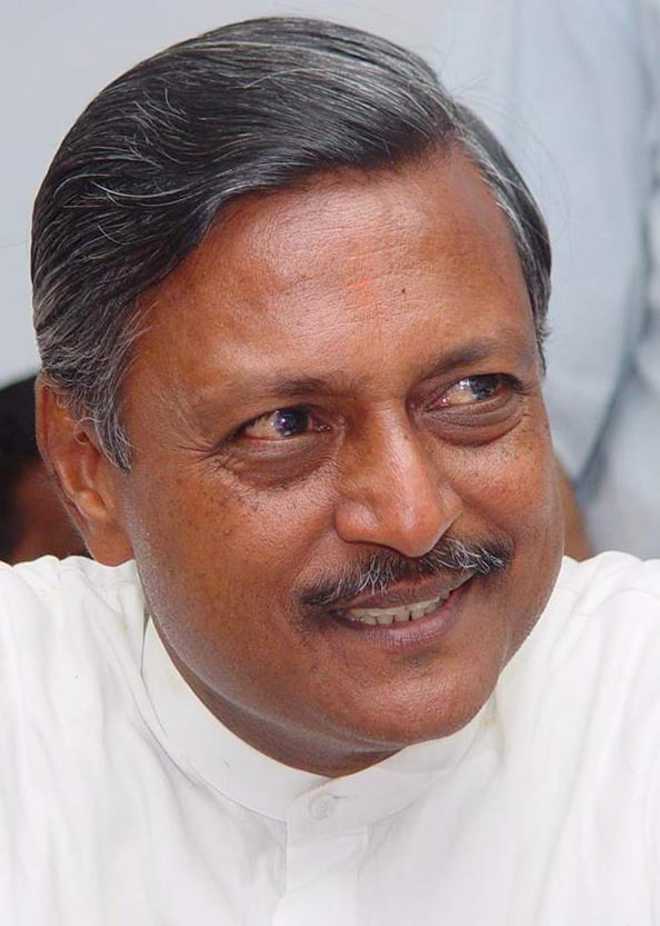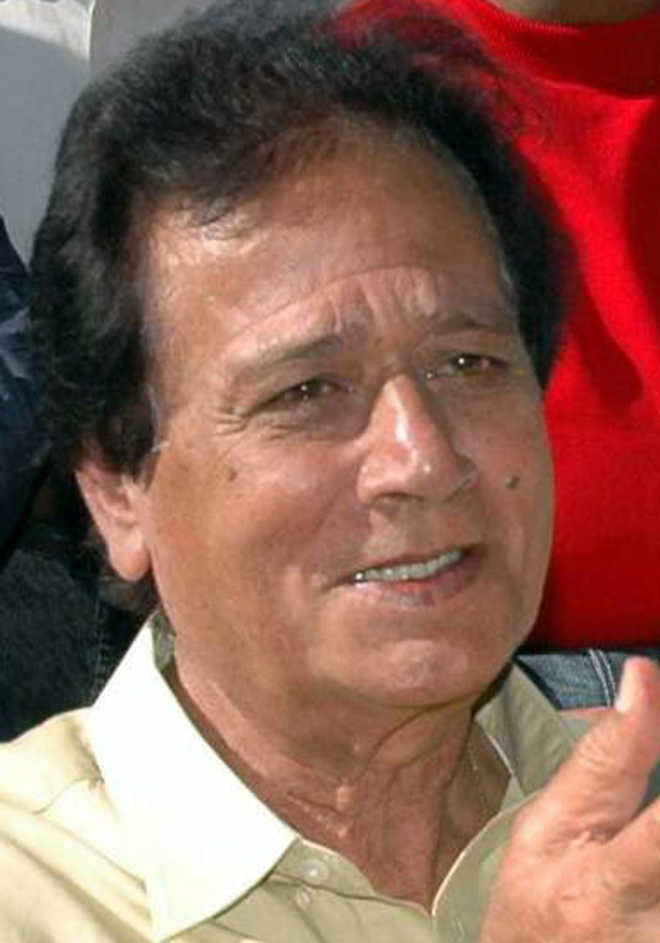Army personnel take their positions in Sunjuwan area on the second day of terrorist attack in Jammu on Sunday. Tribune photo: Inderjeet Singh
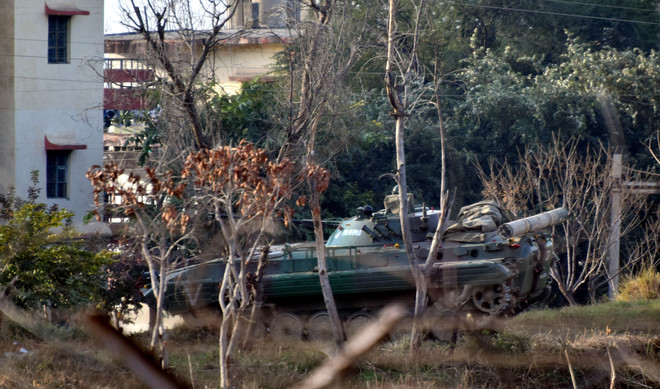
A military tank takes its position outside family quarters in Sunjuwan, Jammu, on the second day of a terrorist strike at an army camp on Sunday. Tribune photo: Inderjeet Sing
Tribune News Service
Sunjuwan (Jammu), February 11
A shootout with some armed gunmen that began when they stormed an army camp in Jammu’s Sunjuwan in a pre-dawn strike on Saturday has left six people—five soldiers and one civilian— as well as three militants dead, a defence spokesperson said.
(Follow The Tribune on Facebook; and Twitter @thetribunechd)
Defence spokesperson Lt Col Devender Anand confirmed three heavily armed militants—suspected to belong to Jaish-e-Mohammad— had been killed.
All three gunmen were dressed in military fatigues.
There are unconfirmed reports of two more militants being gunned down.
Among the 10 wounded are six women and a 14-year-old boy. The latter was hit in the head with a bullet and is believed to be critical.
Also among the injured is a pregnant woman who later delivered a baby. Both are believed stable.
Search operation at the camp is still ongoing. The defence spokesperson said that security forces found heavy arms and ammunition.
A group of heavily armed gunmen attacked the sprawling camp of the 36 brigade of Jammu and Kashmir Light Infantry early on Saturday.
Two Army personnel, including a Junior Commissioned Officer (JCO), were killed on Saturday.
Lt Col Devender Anand said a number of families were still there and the Army’s aim was to ensure their safety.
“There was no firing since last night,” the officer said.
Those who were killed have been identified as Subedar Madan Lal Choudhary; Subedar Mohd Ashraf Mir; Ha. Habib-Ullah Qurashi; Naik Manzoor Ahmed; Lance Naik Mohd lqbal . A civilian, Lance Naik Iqbal’s father, also died in the operation.
Lt. Col. Rohit Solanki of 6th Mahar; Lance Naik Bahadur Singh of 1st Jammu and Kashmir Light Infantry; Hay Abdul Hamid Rashid of 1st Jammu and Kashmir Light Infantry; and Subedar Rajinder Singh of 6th Mahar were injured.
Six civilians were also wounded, among them a pregnant woman.
Read: Residents woken up by gunshots, grenade blastsThe latest attack on the camp took place nearly 15 months after the Jammu region was hit by a similar attack. On November 29, 2016, terrorists had stormed the Army’s Nagrota camp on the outskirts of Jammu city, killing seven Army personnel, including two officers. Three terrorists were also gunned down.
The terrorists had struck before dawn on Saturday and managed to sneak into the camp from the rear side of the base after a brief exchange of fire with the sentry on its periphery.
“The terrorists entered the family accommodation complex after which quick response teams cordoned off the area and isolated the terrorists, who are holed up in a few houses (inside the camp),” officials said.
While there was no action around the main entrance and vehicles were moving along the Jammu-Lakhanpur bypass in front of the camp, Army personnel in bullet-proof vehicles engaged in the operation to rescue people from the family quarters in the rear side of the base.
Contingents of CRPF and police were posted outside the boundary wall and were keeping curious onlookers at bay to avoid civilian casualties.
A high alert has been sounded in Jammu and security beefed up in and around the city.
Intelligence inputs had warned of an attack on an Army or security establishment by Jaish-e-Mohammed in view of the death anniversary of Afzal Guru who was hanged on February 9, 2013.
Meanwhile, Leader of Opposition in Rajya Sabha Ghulam Nabi Azad and some other senior Congress leaders visited Military Hospital to enquire after those wounded in the attack. With PTI











